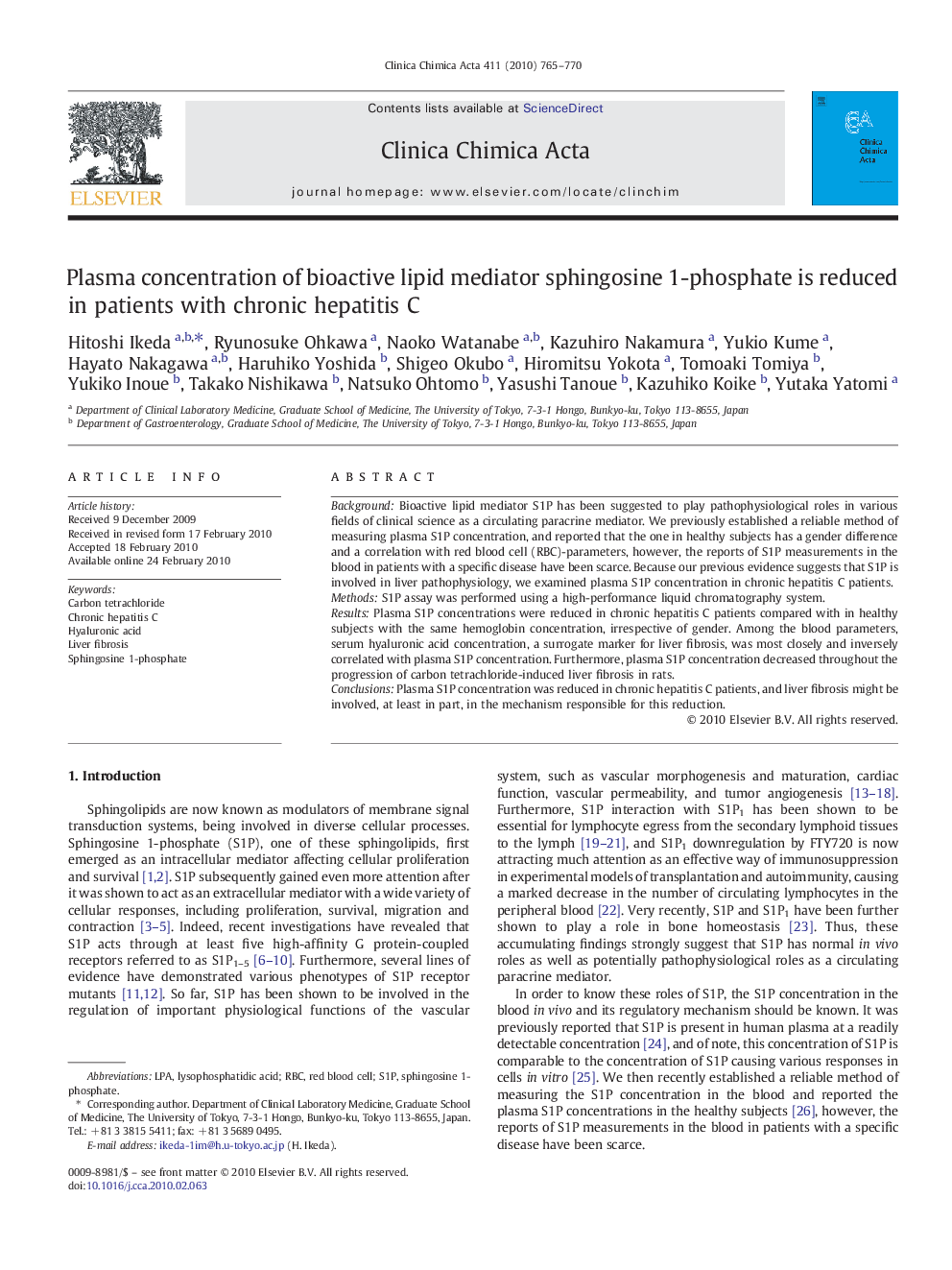| Article ID | Journal | Published Year | Pages | File Type |
|---|---|---|---|---|
| 1967022 | Clinica Chimica Acta | 2010 | 6 Pages |
BackgroundBioactive lipid mediator S1P has been suggested to play pathophysiological roles in various fields of clinical science as a circulating paracrine mediator. We previously established a reliable method of measuring plasma S1P concentration, and reported that the one in healthy subjects has a gender difference and a correlation with red blood cell (RBC)-parameters, however, the reports of S1P measurements in the blood in patients with a specific disease have been scarce. Because our previous evidence suggests that S1P is involved in liver pathophysiology, we examined plasma S1P concentration in chronic hepatitis C patients.MethodsS1P assay was performed using a high-performance liquid chromatography system.ResultsPlasma S1P concentrations were reduced in chronic hepatitis C patients compared with in healthy subjects with the same hemoglobin concentration, irrespective of gender. Among the blood parameters, serum hyaluronic acid concentration, a surrogate marker for liver fibrosis, was most closely and inversely correlated with plasma S1P concentration. Furthermore, plasma S1P concentration decreased throughout the progression of carbon tetrachloride-induced liver fibrosis in rats.ConclusionsPlasma S1P concentration was reduced in chronic hepatitis C patients, and liver fibrosis might be involved, at least in part, in the mechanism responsible for this reduction.
